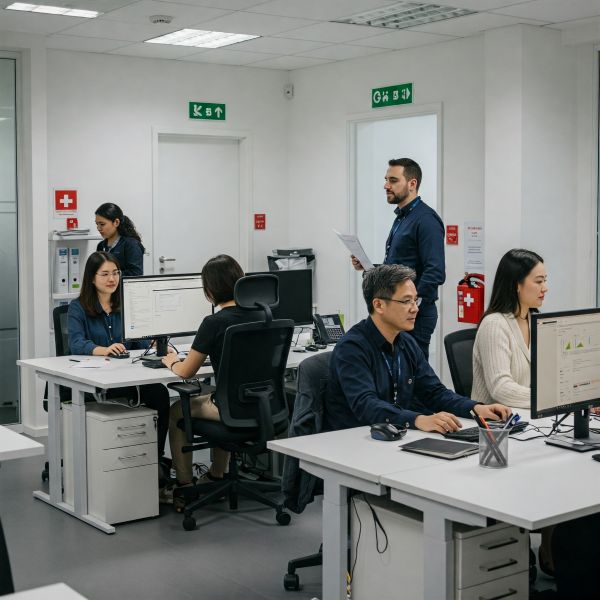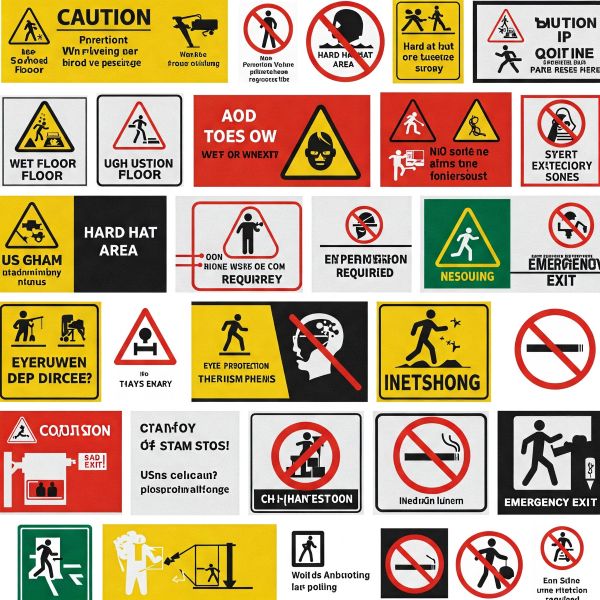Workplace Safety Tips for Small Businesses: Protecting Your Most Valuable Asset

Running a small business is a whirlwind of tasks, from managing finances to serving customers. In the hustle and bustle, workplace safety can sometimes fall by the wayside. However, neglecting safety not only puts your employees at risk but also exposes your business to potential legal and financial repercussions. Creating a safe and healthy work environment is an investment that pays dividends in productivity, morale, and long-term success.
This guide provides essential workplace safety tips tailored for small businesses, empowering you to create a secure environment for your team and your business’s future.
1. Cultivate a Safety-First Culture:
Safety shouldn’t be a mere checklist item; it must be ingrained in your company’s DNA. Start by establishing a clear safety policy and communicating it effectively to all employees. Lead by example, demonstrating your commitment to safety in your daily actions. Encourage open communication about safety concerns, fostering an environment where employees feel comfortable reporting hazards without fear of reprisal.
2. Conduct Regular Risk Assessments:
Proactively identify potential hazards in your workplace. This involves conducting regular risk assessments, evaluating every aspect of your operations, from equipment and machinery to work processes and physical environment. Document your findings and implement corrective actions to mitigate identified risks.
3. Provide Comprehensive Safety Training:
Ensure all employees receive thorough safety training relevant to their roles. This includes training on hazard identification, proper use of safety equipment, emergency procedures, and safe work practices. Regular refresher training is crucial to reinforce safety knowledge and address any changes in procedures or equipment.
4. Invest in Appropriate Safety Equipment:
Provide your employees with the necessary personal protective equipment (PPE) to safeguard them from potential hazards. This may include safety glasses, gloves, hard hats, respirators, and hearing protection. Ensure that PPE is properly fitted, maintained, and readily available.
5. Maintain a Clean and Organized Workspace:
A cluttered and disorganized workspace is a breeding ground for accidents. Implement a system for regular cleaning and organization, ensuring walkways are clear, spills are promptly cleaned, and materials are stored safely. Encourage employees to take ownership of their workspace cleanliness.
6. Implement Ergonomic Practices:
Repetitive motions, awkward postures, and prolonged sitting can lead to musculoskeletal injuries. Implement ergonomic practices to minimize these risks. This includes providing adjustable workstations, ergonomic chairs, and training on proper lifting techniques.
7. Establish Emergency Procedures:
Develop comprehensive emergency procedures for various scenarios, including fires, medical emergencies, and natural disasters. Conduct regular drills to ensure employees are familiar with evacuation routes, assembly points, and emergency contact information.
1. www.proman-uk.com // www.classace.io
8. Maintain Equipment and Machinery:
Regularly inspect and maintain all equipment and machinery to ensure they are in safe working condition. Implement a preventative maintenance schedule, train employees on proper equipment operation, and promptly address any malfunctions.
9. Promote a Healthy Work-Life Balance:
Employee fatigue and stress can significantly impact safety. Encourage a healthy work-life balance by promoting reasonable work hours, providing adequate breaks, and offering resources for stress management.
10. Stay Informed and Updated:
Workplace safety regulations and best practices are constantly evolving. Stay informed about the latest developments by subscribing to safety publications, attending industry events, and consulting with safety professionals.
11. Document Everything:
Maintain meticulous records of all safety-related activities, including training, inspections, incidents, and corrective actions. This documentation serves as evidence of your commitment to safety and can be invaluable in the event of an audit or investigation.
12. Seek Expert Advice:
Don’t hesitate to seek advice from safety professionals or consultants. They can provide valuable insights and guidance on developing and implementing effective safety programs.
Conclusion:
Workplace safety is not just a legal obligation; it’s a moral imperative. By prioritizing safety, small businesses can create a positive and productive work environment, protect their employees, and build a sustainable future. Remember, a safe workplace is a thriving workplace.
By implementing these tips, small businesses can create a safer, healthier, and more productive work environment, fostering a culture of safety that benefits both employees and the organization as a whole.



